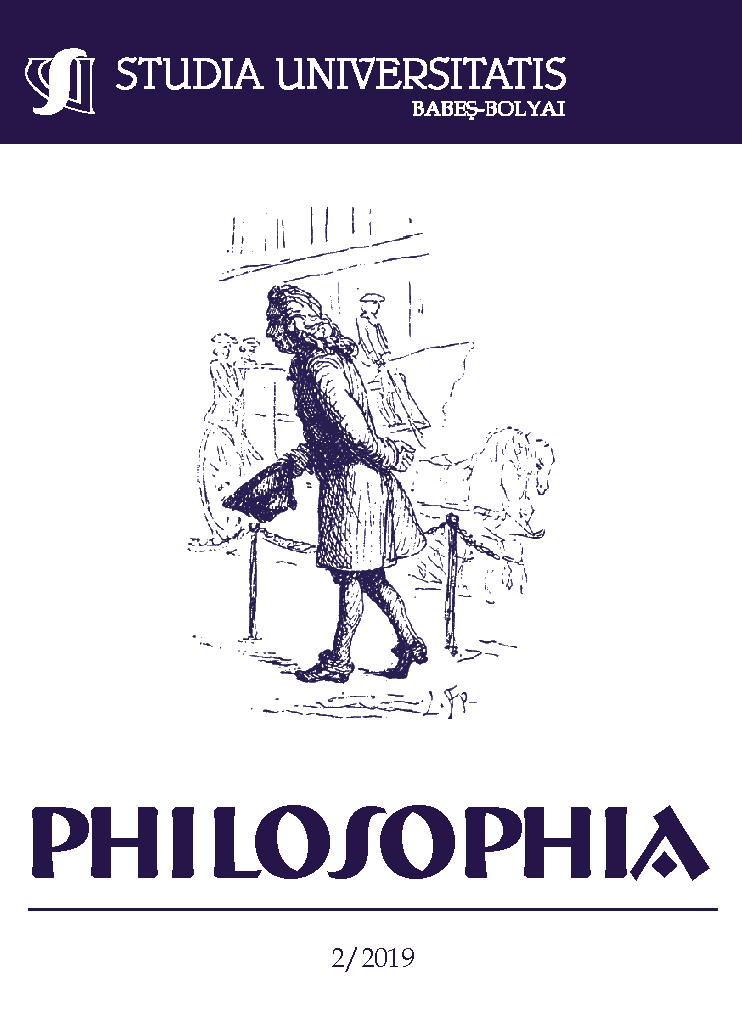DANCE, RHYTHM, AND SOCIAL SPACE
DOI:
https://doi.org/10.24193/subbphil.2019.2.06Keywords:
movement, body, space, dance, aestheticsAbstract
Does contemporary phenomenology envision movement in space as a displacement from a point A to a point B? Is there something more at stake in the movement of our bodies, that cannot be reduced to this type of displacement ? What happens when several bodies move together, like in dance practices of all kinds ? The paper questions the role of repetitive movements in the institution of places we inhabit and the importance of the places we find ourselves to be for the way we move in space. Starting from the philosophical reflections on the Museum of Dance initiated by the French choreograph Boris Charmatz and through analysis of the American choreograph Wendy Woodson's work, the paper aims to shed light on the double dimension of repetitive movements, as they install us in space and as they alienate us from ourselves. The purpose of the paper is to reflect on a phenomenology of rhythm that helps articulate an aesthetic perspective on movement entailing social and political incidences.
References
Abraham, Nicolas. 2005. Rhythms. On the Work, Translation, and Psychoanalysis, Collected and presented by N. T. Rand and M. Torok, Stanford: Stanford University Press.
Bigé, Romain. 2016. “Ce que la phénoménologie peut apprendre de la dance. Straus, Merleau-Ponty, Patočka” in Recherche en Danse , 5: https://journals.openedition.org/danse/1394#tocto2n6.
Charmatz, Boris. Interviews: may 2015: https://www.youtube.com/watch?v=8jxN_B-STVU&t=37soctober 2016: https://www.youtube.com/watch?v=ua0653yerR4&t=9s.
Debord, Guy. 2006. “Critique de la séparation” in Oeuvres, Paris: Gallimard/Quarto.
Fink, Eugen. 1995. Sixth Cartesian Meditation: The Idea of a Transcendental Theory of Method, tr. R. Bruzina, Bloomington & Indianapolis: Indiana University Press.
Goldmann, Lucien. 1959. “La Réification” in Id. Recherches dialectiques, Gallimard/nrf, 1959, pp. 64-106.
Grandjean, Nathalie and Loute, Alain (dir.) Valeurs de l’attention. Perspectives éthiques, politiques et épistémologiques, Montpellier Presses Universitaires du Septentrion, 2019.
[Kierkegaard. Sören], Constantin Constantius. 1983. Repetition in Sören Kierkegaard, Fear and Trembling. Repetition, Ed. H. V. Hong and E. V. Hong (Kierkegaard’s Writings VI), Princeton: Princeton University Press.
Maldiney, Henry. 1967. “L’esthétique des rythmes” in Id., Regard, parole, espace, Lausanne: L’âge d’homme, 1973, pp. 147-172.
Maldiney, Henry. 1991. “L’existence en question dans la dépression et la mélancolie” in Penser l’homme et la folie, Grenoble: Millon.
Maldiney, Henry. 2010. Ouvrir le rien. L’art nu, La Versanne: Encre Marine.
Popa, Delia. 2005. “The Relation between Space and Imagination in Husserl’s Phenomenology” in the International Yearbook for Hermeneutics, pp. 104-115.
Downloads
Published
How to Cite
Issue
Section
License
Copyright (c) 2019 Studia Universitatis Babeș-Bolyai Philosophia

This work is licensed under a Creative Commons Attribution-NonCommercial-NoDerivatives 4.0 International License.





